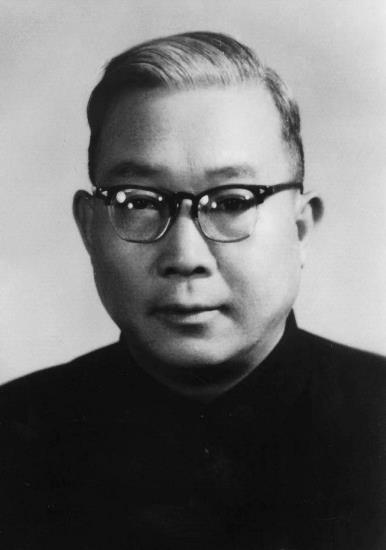
LEE Hsun
Over the past century, a large number of Chinese scholars, with the ideals of enriching and strengthening the motherland and the original intention of saving the country through science, sailed away to study advanced science and sought the way of national rejuvenation. At the beginning of the founding of New China, many overseas scholars, including LEE Hsun, in order to put into practice the idea of serving the country with science, resolutely gave up their comfortable lives and good jobs, and returned to the motherland with patriotic fervor, experiencing bumps and setbacks, and became the backbone of the development of science and technology in New China, and made important contributions to China's economic construction, national defense construction, and the cause of science and education.
LEE Hsun was admitted to the University of Sheffield, England, in 1937, and received a doctorate degree in philosophy in 1940 and a doctorate degree in metallurgical science in 1951. In his research, he discovered that hydrogen in steel leads to cracking and found out the law of removing hydrogen from steel. Through several papers, he comprehensively elaborated on the mechanism of cracking in alloy structural steel, and proposed measures and process parameters such as the temperature range of diffusion dehydrogenation, etc., and is widely recognized as the founder of the research field.
During his study in the UK, LEE Hsun always cared about his motherland, he joined the "China Alumni Association in the UK" and served as the chairman of the Sheffield Branch, actively organized, contacted and participated in various activities to discuss and improve the understanding of the situation in the motherland, and played a very positive role in encouraging and mobilizing the talents to return to home country upon completion of their studies. Many scientists, including ZHANG Peilin, FANG Shuang, ZHANG Zuomei, ZHUANGg Yuzhi and KE Jun, were inspired by LEE Hsun to return to China.

LEE Hsun's graduation photo and Doctor of Metallurgical Science degree certificate

1950-51 Alumni Association Roster (Chairman of Sheffield Branch was LEE Hsun, Secretary was FANG Shuang, Chairman of Midland Branch was KE Jun)
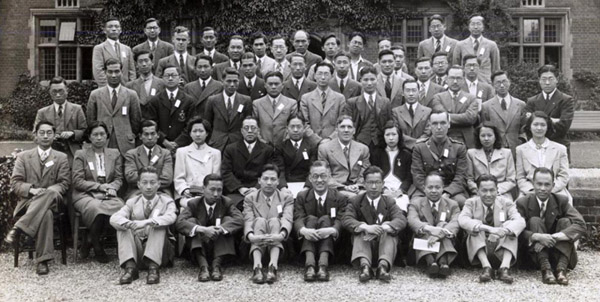
Group photo of the 1941 Chinese Alumni Association in Cambridge, UK (third row, first from left)

Group photo of China-Britain Alumni Association in Birmingham, England, April 1943 (second from right, fourth row)
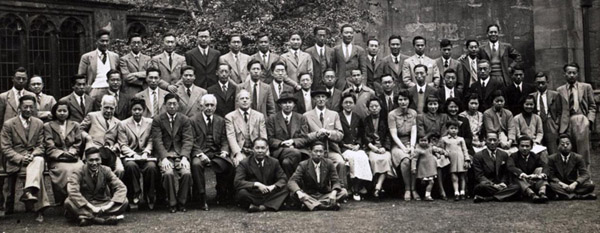
A group photo of the China-Britain Alumni Association in Oxford, England in July 1943 (second from right, third row)
Shortly after the founding of New China, GUO Moruo, President of the Chinese Academy of Sciences, wrote a letter inviting LEE Hsun to return to China to establish the Institute of Metallurgy. Faced with the University of Sheffield's offer of promotion, salary increase, and the promise of joining the British Nationality, LEE Hsun replied clearly, "I will always be a Chinese."

GUO Moruo's invitation letter to LEE Hsun in 1950

LEE Hsun with ZHANG Peilin, FANG Shuang and ZHANG Zuomei before returning to China in 1951 (front row, second from left)
In order to better serve the iron and steel construction of new China, LEE Hsun chose to establish the Institute of Metal Research in Shenyang, the center city of Northeast China's industry, and he also successively invited scholars who had returned from Europe and the United States, such as KE Tingsui, HE Yizhen, SHI Changxu, and GUO Kexin, etc., to come to work in the Institute, and strongly supported them to fully display their talents and make contributions to the development of their respective academic fields.
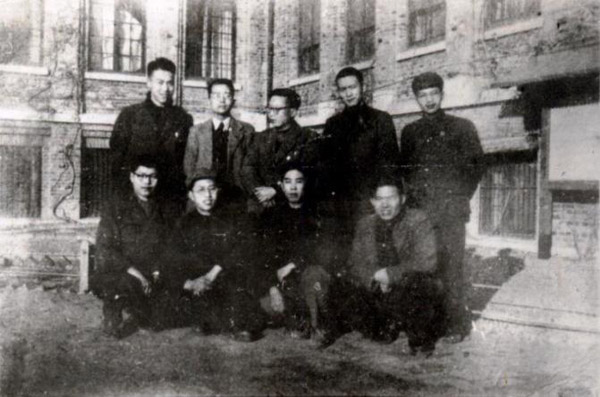
A group photo of the Institute of Metal Research in Beijing in 1951 (back row, center)
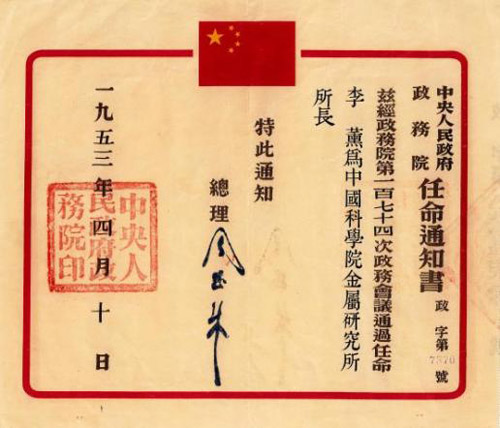
Premier ZHOU Enlai signed and issued the appointment letter in 1953
LEE Hsun presided over the Institute of Metal Research for thirty years and always insisted that scientific research was mainly oriented to the main battlefield of economic construction and national defense construction. At the same time, he attached importance to basic theoretical research. As the convenor of the National Long-term Science Planning in metallurgy, LEE Hsun planned the blueprint for the development of China's metallurgy industry. LEE Hsun also attached great importance to the training of talents. Under his idea, the Institute of Metal Research has gradually formed an excellent academic style which advocating the spirit of "three strictnesses" (seriousness, strictness and rigor) and a down-to-earth and factual work style.
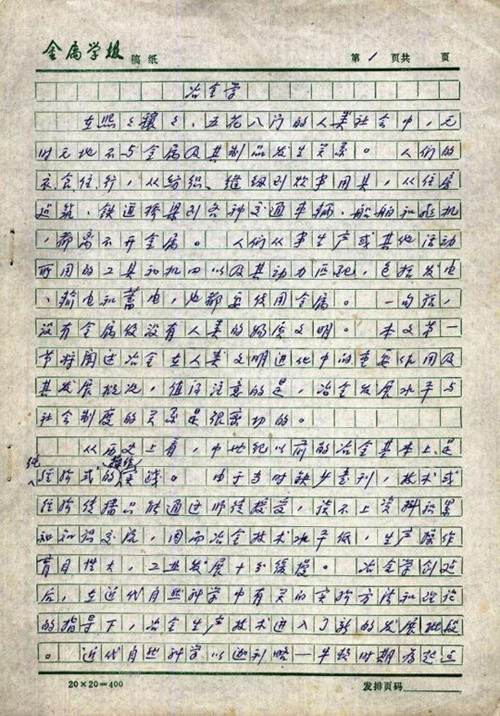
Manuscript of Metallurgy
In addition to presiding over the Institute, LEE Hsun also actively participated in various political activities at the central and local levels, offered advice, made suggestions, and undertook a lot of social work. He was elected to the National People's Congress at all levels for many times, and served as a member of the Liaoning Provincial Committee of the Communist Party of China (CPC) and Deputy Director of the Standing Committee of the Liaoning Provincial People's Congress.

Certificate of election as a deputy to the Shenhe District People's Congress of Shenyang City in 1953
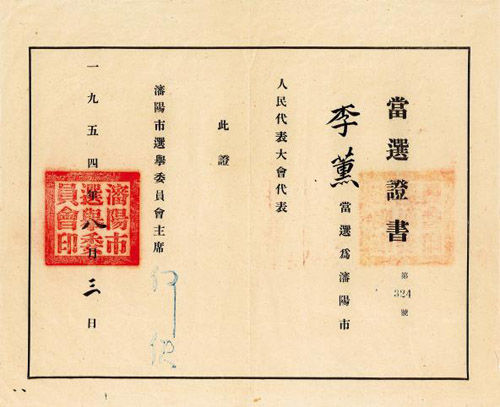
Certificate of election as a deputy to the Shenyang Municipal People's Congress in 1954

Notice of Election as Member of Shenyang Municipal People's Committee in 1955
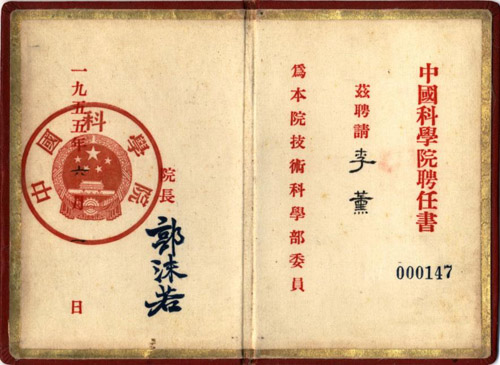
Elected Member of the First Session of the Chinese Academy of Sciences (members of the Academy have been renamed Academicians since 1993) in 1955

Notice of Election as a Deputy to the Second National People's Congress of China in 1958